This is an updated version of a post originally published on September 4th 2015.
Construction is underway on Little LOCA, a 105 unit apartment building in the Central Eastside by Ankrom Moisan Architects. The 6 story building will have 105 units, split between 35 studios, 60 one bedroom units and 10 two bedroom units. Up to 5 retail spaces are proposed at the ground level. Parking for 17 cars and 163 bicycles will be provided. The project was taken through Design Review by Foresight Development & Real Estate. The development was then sold to Killian Pacific, developer of a number of Central Eastside project including the nearby LOCA @ The Goat Blocks.
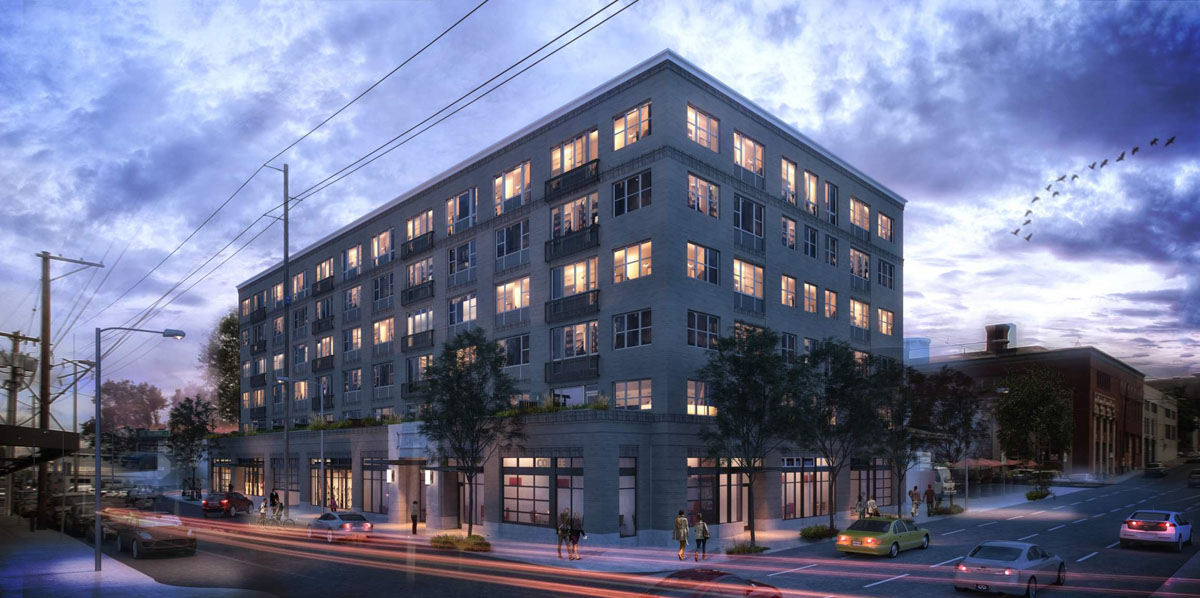
The project site is a half block at 915 SE Belmont Street, seen below in 2015 when it was still being used as surface parking. One block to the west is Grand Central Bowl, which was renovated by the same Foresight. The under construction LOCA @ the Goat Blocks development is located one block to the south and east. Other nearby developments include the under construction Modera Belmont and Grand Belmont, which has now been submitted for Design Review.
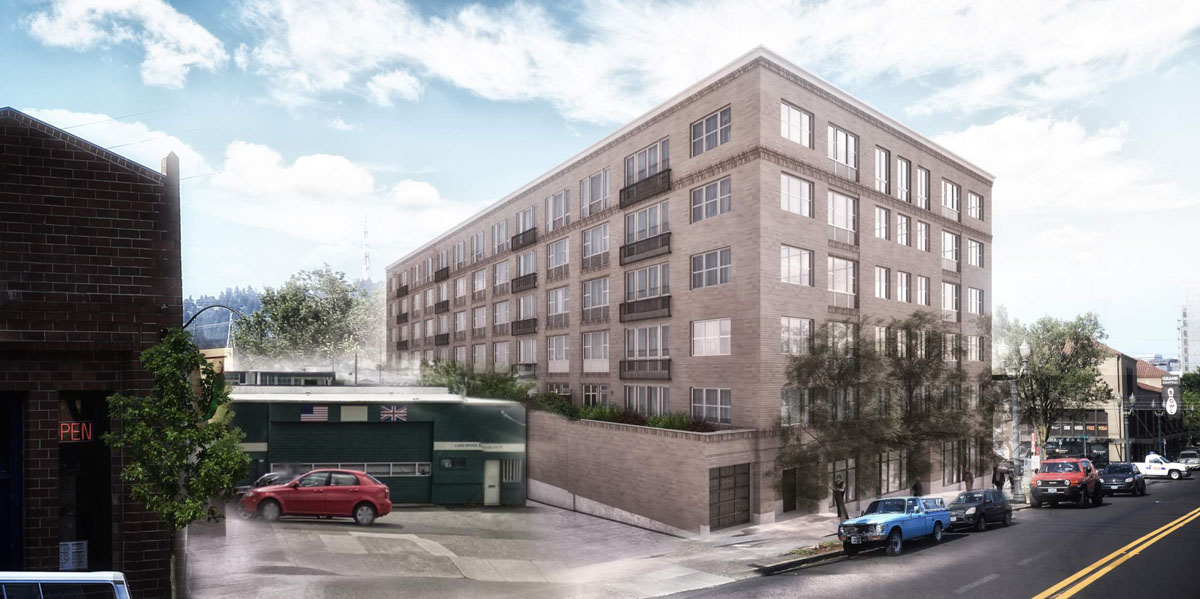
The brick clad building takes its design cues from the masonry warehouses of the Central Eastside, including the John Deere Plow Company Building and the Towne Storage Building. The massing of the building is very simple, with the largest moves being the steps back at the second floor, on both the east and west elevations. On the west elevation the step back is required to maintain sufficient clearance from the high voltage power lines along SE 9th Ave serving the Lloyd District; while on the east elevation the step back is needed to allow the amount of glazing proposed.
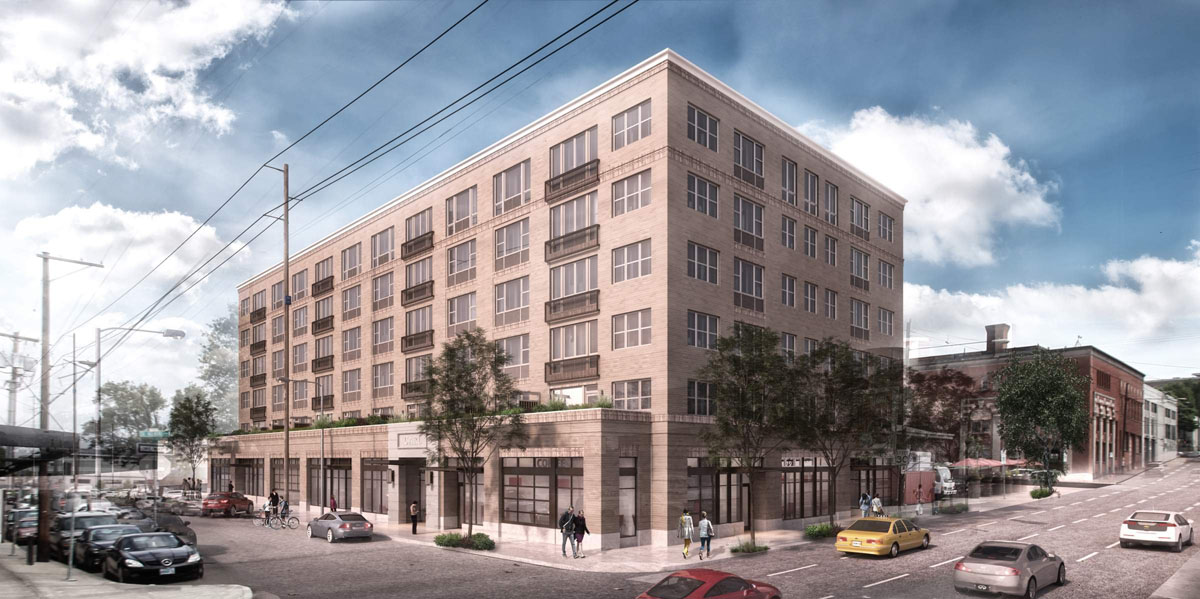
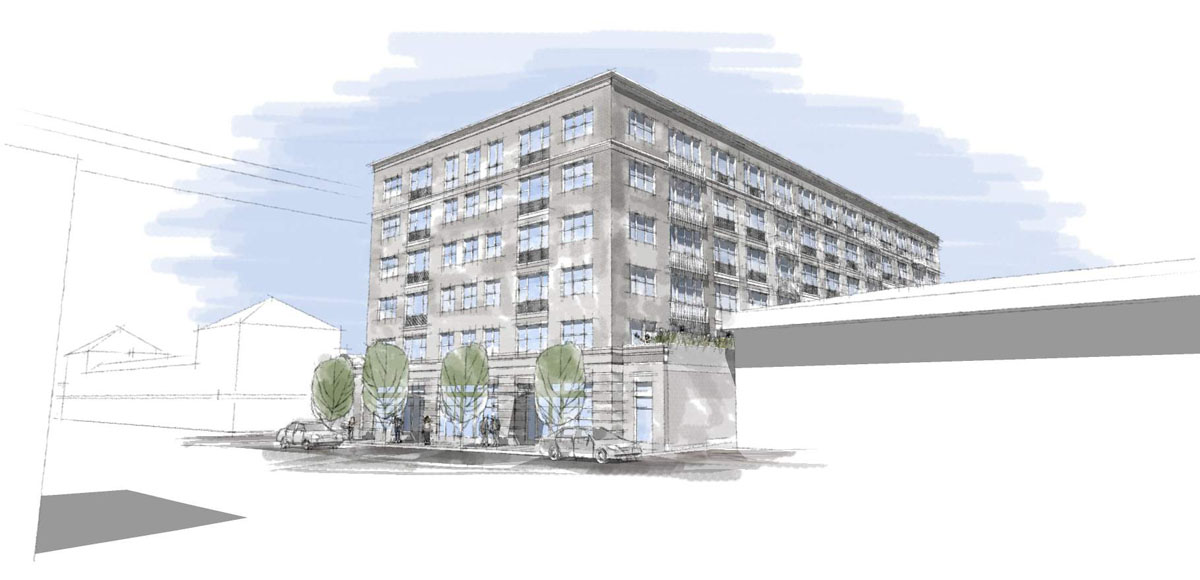
Changes made since the first Design Review hearing include increasing the number of Juliette balconies, the relocation of the main entrance to be further from the garage door, and the simplification of the ground floor window system. At the friendly suggestion of the Design Commission air conditioning was introduced to the building, with louvers integrated into the window system.
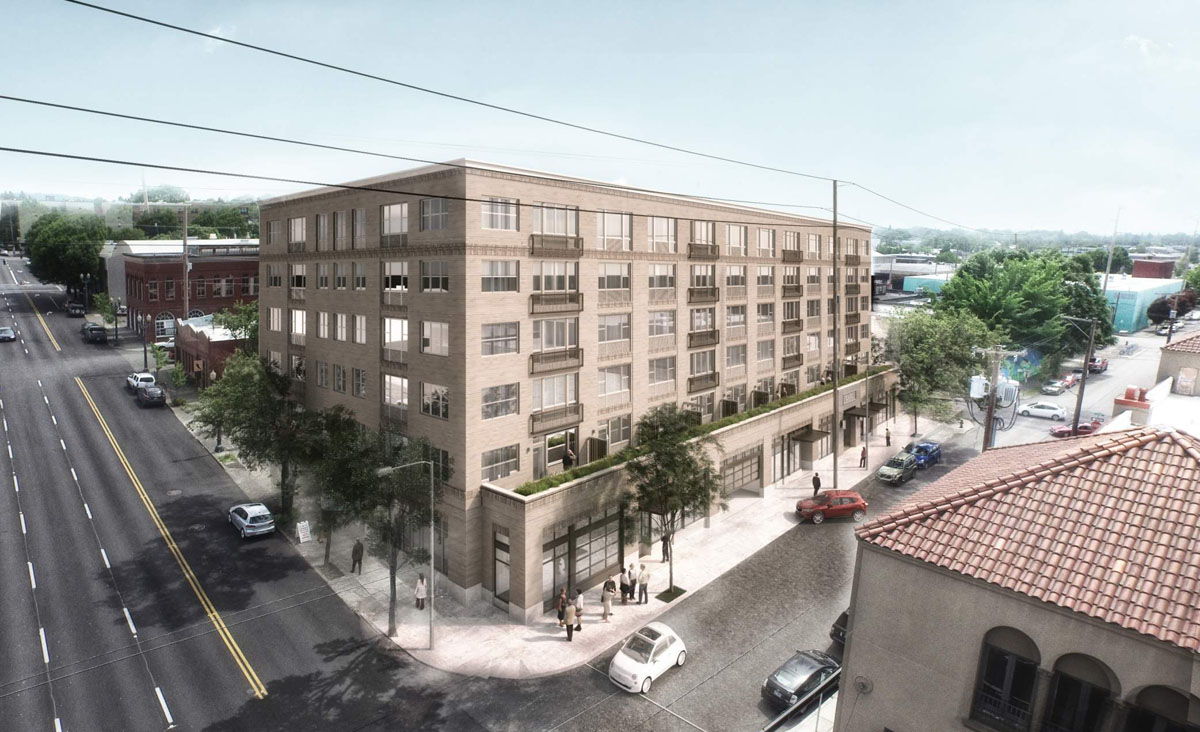
The project was approved [PDF] through a Type III Design Review on August 20th, 2015. No public testimony was received during the Design Review process, either in writing or at the three public hearings. In the Final Findings and Decision by the Design Commission it was found that despite being taller than many of the surrounding buildings, the 9th & Belmont apartments will complement the context of existing buildings in the neighborhood:
The area historically operated as a working and industrial manufacturing district with a mix of uses within buildings of varying styles and materials. The immediate area around the site contains a modern multi-story government office building, several renovated low-scale streetcar-era commercial structures, a quanset hut, warehouse-style buildings, and surface parking lots. The neighborhood is starting to redevelop in a new direction with the construction of a number of mid-rise apartment buildings around the periphery of the Central Eastside. This proposed building’s brick exterior which is highlighted by dimensional patterning and recesses, the simple rectilinear form, and repetitive window openings match a number of local early 20th Century mid-rise warehouse style buildings. Though the immediately adjacent buildings are one and two-story structures, the proposed building massing and its location at the lot lines anticipates the desired height and prominence of buildings in this portion of the Central Eastside.
Building permits for Little LOCA were submitted in June 2015. The permit was issued by the City in May 2016. Construction began shortly afterwards.
Plans, Sections and Elevations
- Plan – Level 1
- Plan – Level 2
- Plan – Levels 3 to 6
- Plan – Roof
- Elevation – West
- Elevation – South
- Elevation – East
- Elevation – West
- Section – North/South
- Section – East/West
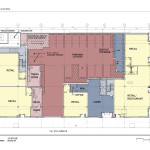
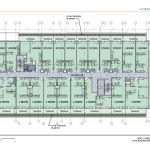
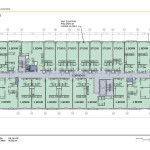
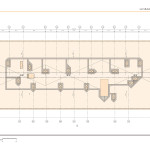
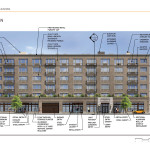
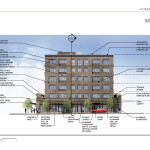
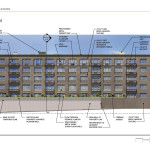
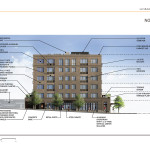
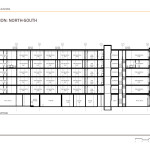
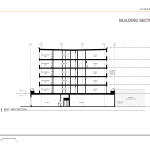
Inner Belmont and Burnside are the next Williams or Division. Dense development in inner Burnside and Belmont (as well as in the Lloyd Center) actually makes a lot of sense, given that they are within short walking distance of downtown. The developments on Division on the other hand, are 30 blocks away from downtown on a narrow two way street that has no room for either bike lanes or rapid transit. It’s interesting how development has bypassed areas that seem ideal, like E Broadway (which is close to downtown and on the streetcar line), or the Hollywood town center (which is next to a MAX station and I-85). Interstate Ave would seem like a better place than Williams, given the presence of the MAX line. While I’m not opposed to any of the development that has taken place, I do think a lot of it has clustered in places that make far less sense than certain places that have experienced little to no development.
Why do you think that is Chris?
My theory is that it’s precisely because people love these narrow, two-way streets, despite complaints that they are too narrow. When there is lots of activity on small streets like this, it leads to safe, slow, pleasant environments. If Division, or Mississippi or Williams were wider, with more lanes, they would not see the level of development they are currently receiving.
The streets that ‘seem ideal,’ such as inner Belmont, Burnside, Broadway and Sandy are all bigger streets. This may seem like an asset for increased development, but they are actually counter intuitively negative features.
Access to the interstate seems nice, until you hear it and smell it all day. A bigger streets seems like it would bring less congestion, and it might, but it also brings crossing difficulty, lower safety, more noise and a less pleasant environment. Maybe it doesn’t make sense to cluster dense development on these big streets after all.
The good news is that we can tone it down a bit. All of the streets you’ve mentioned have excess auto capacity which is leeching value and redevelopment potential from these streets. If we want to see new development clustered on E Broadway, or Sandy, or Grand, we will need to reallocate the excessive space dedicated to cars, and replace it with wider sidewalks, transit only lanes, and protected bike lanes.
I’m not sure I agree with your hypothesis, namely because inner E Burnside — and to some extent Belmont/Morrison — is a counter example to the trend you speak of. Either on Burnside, or just off Burnside (Ankeny or Couch), there are about five large mixed use projects that have been completed in the last year or so. Two enormous projects are under construction (21 and 10 stories respective), as are two smaller ones (4 and 5 stories). Four more are in planning stages.
Inner Belmont/Morrison is still in its early stages of development. There is one large project already finished near 20th ave, two projects under construction (including the massive project at the former Goat Blocks), and five in the pipe.
Because of this, I think there has to be some other explanation as to why inner E Broadway and Hollywood aren’t getting much development, particularly Hollywood, which has plenty of streets in the downtown area that are only two lanes. But you can look at downtown Hollywood on the map, and although they’ve recently completed a project there, there is only one additional project under construction, and nothing else planned at all. The whole downtown area is fully of surface lots and unremarkable one story commercial buildings, and there is basically nothing planned after the microapartment near the Trader Joes is complete. Interstate is also only a two lane street for the majority of its length. There are a number of projects under construction or in planning that are just off Interstate, although they are considerable smaller than what’s being built around Burnside, primarily 12 to 25 unit apartments.
So I don’t really know what the reason is. I’m guessing it’s economic in nature. Perhaps existing uses are still too profitable to replace.
I also think that road diets, better bike lanes, wider sidewalks, etc. often arrive *after* there is a demand for it. The project won’t be considered merited until a lot of people live there and start demanding a more livable streetscape.
I still like Nick’s hypothesis of why, especially the retail, is successful along Division.
I’ll throw out another hypothesis on why Division and Williams first. The delta between the land value and the income/final project value is higher in those areas than in the Central city (east side non-industrial) or the Hollywood district. Hollywood especially has always been an okay area, so it always had higher rents/values than old division or Vancouver/Williams. That has made it harder to develop and profit without a bigger building. Although the no parking entitlement thing should have helped. It is similar to the Gateway issue, but not as bad. High entitlement and land value and less demand/comparables for projects in that area mean a riskier project.
My thoughts. The projects will come as the risk to lend and the desire to pay the land prices align. Maybe next cycle.